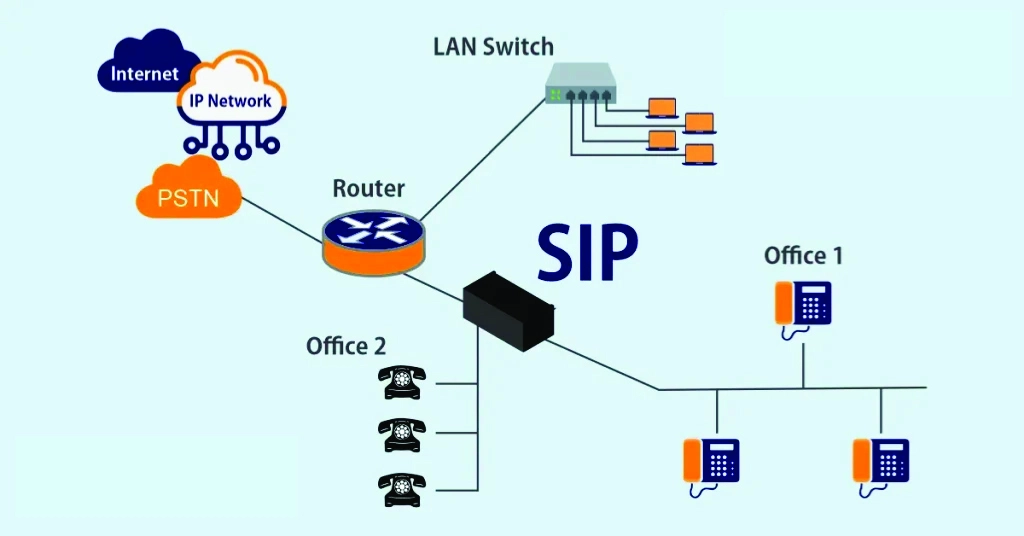In today's interconnected digital landscape, ensuring the security of your Session Initiation Protocol (SIP) infrastructure is paramount. SIP has become the backbone of modern communication systems, facilitating voice and video calls, instant messaging, and multimedia conferences over IP networks. However, its widespread adoption also makes it a prime target for cyber threats. To safeguard your SIP service and protect sensitive data, implementing robust security measures is crucial. In this comprehensive guide, we'll explore best practices for securing your SIP infrastructure.
Understanding SIP Security Risks
Before delving into specific security measures, it's essential to understand the potential risks associated with SIP services. Common threats include:
- Unauthorized Access: Hackers may attempt to gain unauthorized access to your SIP servers to intercept calls, eavesdrop on conversations, or launch malicious attacks.
- Denial-of-Service (DoS) Attacks: Attackers can overwhelm your SIP infrastructure with a flood of fake requests, causing service disruptions and rendering your communication systems unusable.
- Spoofing and Identity Theft: By spoofing caller IDs or impersonating legitimate users, attackers can deceive recipients and manipulate SIP communications for fraudulent purposes.
- Eavesdropping: Insecure SIP connections are susceptible to eavesdropping, allowing attackers to intercept and decipher sensitive information exchanged during calls.
Best Practices for SIP Security
To mitigate these risks and fortify your SIP infrastructure against potential threats, follow these best practices:
1. Implement Strong Authentication Mechanisms:
- Utilize strong passwords and consider implementing multi-factor authentication (MFA) to prevent unauthorized access to SIP accounts.
- Deploy certificates for mutual authentication between SIP entities, ensuring that only trusted parties can establish connections.
2. Encrypt SIP Traffic:
- Encrypt SIP signaling and media streams using secure protocols such as Transport Layer Security (TLS) and Secure Real-time Transport Protocol (SRTP) to prevent eavesdropping and tampering.
3. Configure Firewalls and Intrusion Detection/Prevention Systems (IDPS):
- Configure firewalls to restrict SIP traffic to authorized IP addresses and ports, blocking malicious requests and unauthorized connections.
- Deploy IDPS solutions to monitor SIP traffic for suspicious activities, such as abnormal call volumes or signaling anomalies, and take proactive measures to mitigate potential threats.
4. Regularly Update and Patch SIP Software:
- Stay vigilant against emerging vulnerabilities by keeping your SIP software up-to-date with the latest security patches and firmware updates.
- Implement a robust patch management process to ensure timely deployment of security fixes and mitigate the risk of exploitation by known vulnerabilities.
5. Harden SIP Servers and Endpoints:
- Disable unnecessary SIP services and features to reduce the attack surface and minimize potential vulnerabilities.
- Apply security configurations, such as rate limiting and access control lists (ACLs), to prevent brute-force attacks and unauthorized access attempts.
6. Monitor and Audit SIP Traffic:
- Implement comprehensive logging and auditing mechanisms to monitor SIP traffic and detect anomalous behavior or security incidents.
- Regularly review log files and audit trails to identify potential security breaches or policy violations and take appropriate remedial actions.
7. Educate Users on Security Best Practices:
- Provide training and awareness programs to educate users about common SIP security threats and best practices for safeguarding their credentials and communications.
- Encourage users to exercise caution when sharing sensitive information over SIP channels and to report any suspicious activities or potential security incidents promptly.
Conclusion
Securing your SIP infrastructure requires a proactive and multi-layered approach that encompasses strong authentication, encryption, network security, software updates, and user awareness. By implementing these best practices and staying vigilant against emerging threats, you can enhance the resilience of your SIP service and protect your organization's communication assets from malicious actors. Remember, safeguarding your SIP infrastructure is not a one-time task but an ongoing commitment to maintaining the integrity and confidentiality of your communications in today's evolving threat landscape.





Comments